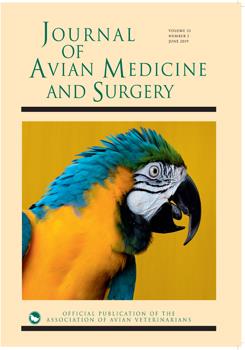A 12-year-old blue-fronted Amazon parrot (Amazona aestiva) of unknown sex (case 1) and a 14-year-old female hybrid Catalina macaw (Ara ararauna × Ara macao) (case 2) were evaluated and treated for an open tarsometatarsal fracture and a tibiotarsal fracture, respectively. In case 1, 1 month of external coaptation resulted in a delayed union, significant osteolysis, and presumptive osteomyelitis, which led to the decision to treat with a key ring fixator. In case 2, a key ring fixator was chosen for fracture repair because of presumed resistance to destruction by the bird. In both cases, fractures were stabilized with makeshift circular external fixators composed of key rings, K-wires, orthopedic wire, and acrylic resin. After key ring fixator removal, radiographs confirmed complete bone healing. Both patients had acceptable function of the affected limbs 5 years (case 1) and 2 years (case 2) after their procedures. The key ring fixator described in this report is a viable option for fracture repair in pelvic limbs of moderately sized birds (300–1500 g).
How to translate text using browser tools
24 May 2019
Key Ring Fixator: A Novel External Fixation Technique for Avian Long Bone Stabilization
Anna Katogiritis,
Sabrina L. Barry,
Nickol Finch
ACCESS THE FULL ARTICLE
Amazona aestiva
Ara ararauna × Ara macao
Avian
blue-fronted Amazon parrot
fracture
macaw
tarsometatarsus





